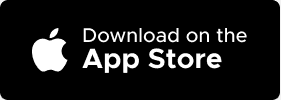Every 14d
Recommended Frequency
1 /2 cup of water
Recommended Amount
Golden sedum needs a thorough watering every two weeks in summer and once a month in winter assuming plant has proper drainage.
Every 365d
Recommended Frequency
Fertilize your Golden Sedum once a year using a cactus fertilizer diluted by half.
Direct Sun
Recommended
Direct Sun is the most intense form of light that your plant will receive from indoors as they will be directly exposed to the sun's rays in this spot!
Every 1095d
Recommended Frequency
Repot your Golden Sedum every three years, or once it outgrows its pot.
Sandy Soil
Recommended Soil
Peat Soil is an acidic soil that retains a lot of moisture and slows decomposition. Due to such a high moisture retention this mix may require irrigation to help with draining. This soil type is best used when paired wit...

Shop Golden Sedum
Questions about Golden Sedum
A golden sedum plant, also known as Sedum adolphii, is a vibrant, succulent plant known for its striking golden-yellow to green leaves that can turn pink or red under stress or sun exposure. This low-maintenance, drought...

Toxicity of Golden Sedum

Common Pests and Diseases
Leaf Shrivel and Drop
Underwatering
Golden sedum requires consistent moisture, especially during hot, dry periods. To address underwatering, gradually increase watering frequency, ensuring the soil is moist but not waterlogged. Implement a regular watering schedule, adjusting based on weather conditions. For potted plants, ensure pots have adequate drainage to prevent root rot. If the plant has severely dehydrated, soak the pot in a tray of water for 30 minutes to rehydrate the soil evenly.
Aphid Infestation
Aphids are small, sap-sucking insects that can infest golden sedum, causing yellowing leaves, stunted growth, and a sticky residue known as honeydew, which can lead to sooty mold.
To manage aphid infestations on golden sedum, start by spraying the plants with a strong jet of water to dislodge the pests. For more severe infestations, apply insecticidal soap or neem oil, focusing on the undersides of leaves where aphids commonly reside. Ensure to repeat the treatment every 7-10 days until the infestation is under control. Introducing beneficial insects, such as ladybugs or lacewings, can also help naturally reduce aphid populations.
Powdery Mildew
Fungal infection
Powdery mildew is a common fungal issue that affects golden sedum, manifesting as white, powdery spots on leaves. To manage this, ensure good air circulation around your plants and avoid overhead watering to keep the foliage dry. Infected leaves should be removed and disposed of properly. For severe infections, apply a fungicide specifically designed for powdery mildew, following the manufacturer's instructions. Preventative measures include planting resistant varieties and maintaining healthy plants through proper fertilization and spacing.

Related Plants
Other Articles:
Top 10 Most Popular Roses
Mar 22, 2022
How to Care for China Roses
Mar 11, 2022
How to Care for Chinese Money Plants
May 15, 2020
How to Grow and Care for A Bird of Paradise
Apr 26, 2020
Top 10 Plants To Grow In A Terrarium
May 31, 2022
How to Grow and Care for Lucky Bamboo
Mar 29, 2022
How to Grow and Care for Corn Plants
Mar 29, 2022
How to Care for Madagascar Dragon Trees
Mar 21, 2022



